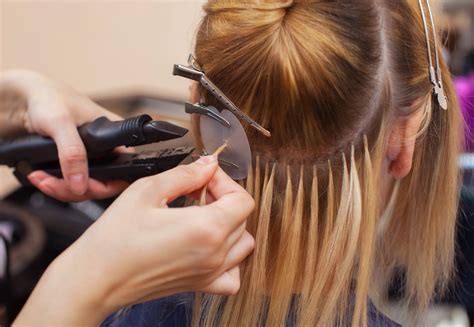Selecting the best hair enhancement option is a crucial decision for achieving your desired look. This comprehensive guide will delve into the key differences between hair extensions and hair toppers, providing insights to help you make the right choice.

Hair Extensions
Hair extensions offer a versatile solution for adding length, volume, and texture to your natural hair. They are typically applied strand-by-strand using various methods, including clip-in, tape-in, and fusion.
Types of Hair Extensions:
- Clip-in extensions: Easily attached and removed, ideal for temporary volume and length.
- Tape-in extensions: Flat, adhesive-backed wefts that lie close to the scalp, providing a seamless blend.
- Fusion extensions: Individually bonded to natural hair strands using heat or keratin fusion, offering long-lasting results.
Benefits of Hair Extensions:
- Customization: Available in various lengths, textures, and colors to match your natural hair.
- Volume and Length: Adds substantial volume and length, transforming thin or short hair.
- Style Versatility: Allows experimentation with different hairstyles without damaging your natural hair.
- Damage-Free Options: Clip-in and halo extensions provide temporary enhancements without causing permanent damage.
Hair Toppers
Hair toppers are partial hair pieces designed to conceal hair loss or thinning areas on the scalp. They are typically worn on top of the head, covering the affected areas with natural-looking hair.
Types of Hair Toppers:
- Monofilament toppers: Sheer base material that allows the appearance of natural scalp.
- Lace front toppers: Delicate lace base with individual hair strands hand-tied, creating a seamless transition.
- Volume toppers: Designed to add volume to thin areas without fully covering the scalp.
Benefits of Hair Toppers:
- Targeted Coverage: Conceals hair loss or thinning in specific areas, providing a discreet and natural solution.
- Convenience: Easy to apply and remove, ideal for everyday wear or special occasions.
- Volume and Density: Adds volume and density to thinning areas, creating a fuller appearance.
- Natural Appearance: High-quality toppers mimic natural hair growth patterns and shades, ensuring a realistic look.
Which One Is Right for You?
The choice between hair extensions and hair toppers depends on your specific needs and goals:
- Permanent vs. Temporary: Hair extensions offer long-lasting results, while hair toppers are more suitable for temporary or targeted coverage.
- Full Coverage vs. Partial Coverage: Hair extensions provide full coverage of the head, while hair toppers conceal specific areas.
- Styling: Hair extensions allow for greater styling versatility, while hair toppers are best suited for natural-looking coverage.
Making the Decision
To determine the best option, consider consulting with a professional hairstylist or hair loss specialist. They can assess your hair type, lifestyle, and specific concerns to recommend the most suitable enhancement.
Additional Factors to Consider:
- Cost: Hair extensions and hair toppers vary in price depending on the type, quality, and installation method.
- Maintenance: Hair toppers require regular cleaning and styling, while hair extensions may require professional maintenance depending on the attachment method.
- Lifestyle: Consider your daily routine and activities when selecting the best option for your needs.
FAQs
- Can I wash and style hair extensions or toppers? Yes, high-quality extensions and toppers can be washed and styled using appropriate hair care products.
- How long do hair extensions or toppers last? The lifespan of extensions and toppers varies depending on the type, care routine, and frequency of wear.
- Can I damage my natural hair with hair extensions or toppers? Proper installation and maintenance can minimize damage to natural hair, but it is important to follow the recommended care instructions.
- Are hair extensions or toppers a better option for concealing hair loss? Hair toppers offer targeted coverage for hair loss, while hair extensions provide full coverage of the head.
- Can I wear hair extensions or toppers in a ponytail or other updo? Some types of hair extensions and toppers can be worn in updos, but it is important to check with the manufacturer’s instructions.
- What is the best way to store hair extensions or toppers? Store extensions and toppers in a cool, dry place, preferably in a silk or satin bag.
Remember that everyone’s hair and lifestyle is unique, so the best way to determine the right enhancement for you is through professional consultation and personal experimentation.
